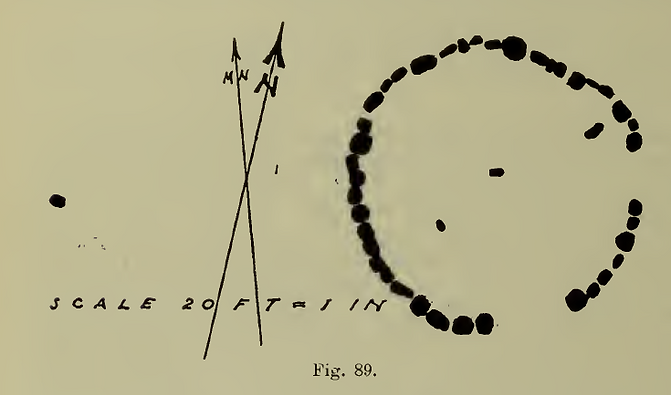
Sometimes, the past hits you like a freight train. And the Ty Uchaf Stone Circle can certainly have that effect on you. Knowing it to be there is no defence, hidden as it is until the last, as you reach the crest of the hillock upon which it sits. And then it’s there, in all its near perfection.

Llandrillo is located in a landscape of the greatest antiquity, one in which evidence of human activity can be traced to at least the Neolithic period. To the west of the village, over the River Dee across Pont Cilan, lies the rather wonderful Branas Uchaf chambered tomb, while to the north on the road to nearby Cynwyd is another Neolithic chambered tomb, Tan-y-coed. The Moel Ty Uchaf Stone Circle, to the near east of the village and some 440m up on the the western edge of the Berwyn Range is not as old as the tombs in the valley below - early Bronze Age is likely, but this ‘fine and almost perfect circle’* is quite the most profound witness to our ancient past - curious and inscrutable. They form a link of sorts, between the chambered tombs of the Neolithic to later round barrows.

The Moel ty Uchaf Circle, depicted in the RCAH in Wales and Monmouthshire (1921)
In truth, the Moel Ty Uchaf Stone Circle is more than likely a ring cairn, a monumental contemporary of stone circles, since in the centre at Ty Uchaf is evidence of a central hollow which may have once been a burial cairn. It would seem to have been excavated in the past, possibly by antiquarians, although there seems to be no record of any such investigation in the available literature. There is also a boulder within the circle, possibly recumbent, to the north east. The circle is some 12 metres across and comprises some 41 remaining standing stones, alternating in size between large and small, with one obvious gap within the circumference to the south east, possibly an entranceway. The stones are set so that most are touching. Outside of the circle, to the near south west is another sizeable boulder, again possibly an example of a recumbent stone. This would again suggest that Ty Uchaf was in fact a monumental burial site, rather than a stone circle as perhaps most would recognise from elsewhere.

The hollow close to the centre of the ring, probably the remains of a cairn.

The outlying boulder, possibly a recumbent, to the south west of the circle.
And none of this conveys how it actually feels to be stood within the confines of this ancient monument - quite the most moving experience, an electric frisson. Some 4000 years ago, our ancestors thought to raise this monument to their dead, some 1400ft in the sky, overlooking their world of valley, field and mountain, overlooking our world. To stand where they stood, to see what they saw is to be immediately connected, to be greater than your meagre sum of years, to be near ageless, to be both meaningless and also the most entirely important centre of the world.
*Royal Commission on Ancient Monuments in Wales and Monmouthshire (1921), p84

